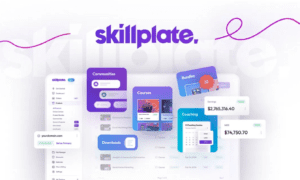Digital payment systems are undergoing a rapid transformation, driven by innovations that prioritize speed, security, and adaptability. Among these advancements, Instant virtual cards are emerging as a game-changer, offering businesses and consumers unprecedented control over financial transactions. These digital tools, which generate unique card numbers for single or limited-use payments, are redefining how money moves in an increasingly interconnected world.
Traditional payment methods, such as physical credit cards or checks, often involve delays, security risks, and administrative burdens. Virtual cards address these pain points by enabling users to create disposable card details instantly, either for one-time purchases or recurring expenses. This flexibility minimizes the risk of fraud, as compromised card numbers become useless after their intended transaction. For businesses, this means fewer chargebacks and reduced exposure to data breaches. Employees can also use virtual cards for expenses without sharing sensitive corporate account information, streamlining workflows in industries like procurement and travel.
The rise of remote work and e-commerce has further accelerated adoption. Consumers now demand seamless, secure checkout experiences across devices and platforms. With instant virtual cards, users can generate a payment method in seconds during online purchases, avoiding the hassle of manually entering physical card details. Subscription-based businesses benefit too, as virtual cards can be set with spending limits or expiration dates, reducing the friction of managing recurring payments and failed transactions.
Integration with digital wallets and fintech platforms has expanded their utility. Banks and financial service providers now embed virtual card issuance directly into mobile apps, allowing customers to create and manage cards on the go. APIs enable businesses to automate payment processes, such as issuing virtual cards for specific vendors or projects, while real-time tracking provides granular insights into spending patterns. This level of customization is particularly valuable for freelancers, startups, and enterprises managing complex supply chains.
Looking ahead, the convergence of virtual cards with emerging technologies like blockchain and AI promises even greater efficiency. Smart contracts could automate payments upon meeting predefined conditions, while machine learning might optimize spending strategies based on historical data. Regulatory frameworks are also evolving to support these innovations, with governments recognizing the role of secure digital payments in fostering economic growth.
Despite their advantages, challenges remain. Widespread adoption requires educating users about virtual card benefits and ensuring interoperability across global payment networks. Cybersecurity threats will persist, necessitating continuous advancements in encryption and authentication protocols. However, as financial ecosystems grow more decentralized, the demand for agile, secure solutions will only intensify.
In this dynamic landscape, instant virtual cards are not just a trend but a foundational shift in financial infrastructure. By merging convenience with robust security, they empower individuals and organizations to transact with confidence in a digital-first economy. As technology continues to evolve, these tools will likely become as ubiquitous as physical wallets, cementing their role in the future of global commerce.
With the rise of digital payment systems, blockchain technology, and mobile-first financial platforms, consumers and businesses alike are rapidly adapting to a landscape where convenience, security, and real-time access are paramount. This shift is not only transforming how transactions are conducted but also redefining financial inclusion by providing access to services in regions where traditional banking infrastructure is limited. As adoption grows, these digital tools are poised to become essential components of everyday economic life, driving innovation and reshaping the global financial ecosystem.
Read More From Techbullion



































